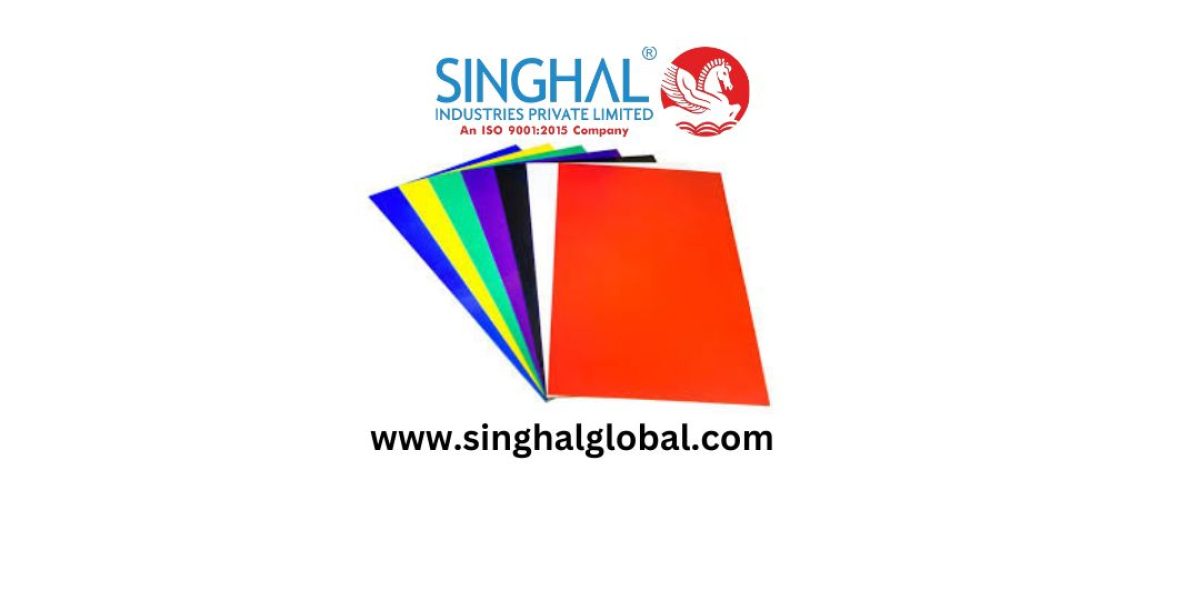The Importance of Formable Plastic Materials
Vacuum form plastic sheets have transformed modern manufacturing by offering a lightweight, flexible, and highly adaptable material for diverse applications. From packaging to industrial components, their ability to be easily molded into complex shapes makes them a go-to option for various industries Plastic Sheet Thermoforming Manufacturers in Ahmedabad are generally made from thermoplastics, which become soft and pliable when heated and harden upon cooling, making them ideal for forming specific contours and details. As industries continue to push the boundaries of design and efficiency, the demand for high-quality thermoplastic sheets suited for vacuum forming has grown considerably.
How the Thermoforming Process Works for Sheet Fabrication
The vacuum forming process begins with heating a plastic sheet until it becomes soft and elastic. Once this temperature is achieved, the sheet is stretched over a mold and a vacuum is applied to pull the material tightly against the mold’s surface. The process results in precise and stable shapes that retain their strength and functionality once cooled. A key benefit of using this technique is the cost-effectiveness of tooling and manufacturing. Compared to other molding methods such as injection molding, vacuum forming offers lower production costs, especially for smaller production runs or prototype development.
Common Materials Used in the Vacuum Forming Industry
A variety of materials can be used in vacuum forming depending on the desired end-use of the product. High-impact polystyrene (HIPS), acrylonitrile butadiene styrene (ABS), polyethylene (PE), polyvinyl chloride (PVC), and polycarbonate are among the most commonly utilized polymers in this process. These materials offer a mix of flexibility, impact resistance, and clarity, which makes them suitable for everything from packaging inserts to automotive interior components. Choosing the right material depends largely on the application’s structural and aesthetic requirements. For instance, polycarbonate is preferred for high-impact environments, while HIPS is often used in display trays and disposable packaging.
Industries Benefiting from Vacuum Form Plastic Sheet Solutions
Many sectors have embraced vacuum form plastic sheets due to their adaptability and cost-efficiency. The automotive industry uses them for interior panels, dashboard components, and underbody shields. In the healthcare sector, they are employed in the manufacturing of custom trays and disposable containers. Food packaging companies prefer vacuum-formed plastic trays and clamshell containers because of their hygiene standards and convenience. Retail businesses also benefit from custom-formed displays and point-of-sale units made from these sheets. This wide range of applications demonstrates the material’s capability to meet various design, functional, and regulatory requirements.
Design Flexibility and Customization Opportunities
One of the most appealing aspects of using vacuum form plastic sheets is the flexibility in design. Manufacturers can experiment with various thicknesses, colors, textures, and finishes to achieve desired visual and functional outcomes. With modern CNC mold-making technologies and advanced heating techniques, even highly intricate designs can be formed with great precision Plastic Sheets For Vacuum Forming Exporters in Ahmedabad ability to customize products without drastically increasing production costs is especially valuable for startups and businesses with unique product concepts. The visual finish of the product can also be enhanced with printing, coating, or painting to meet branding and aesthetic goals.
Sustainability and Environmental Considerations in Production
Environmental consciousness has become a major focus across manufacturing industries, and vacuum forming is no exception. Many plastic sheet producers now incorporate recycled content into their products and ensure that the sheets themselves are recyclable at the end of their lifecycle. Additionally, the efficiency of the vacuum forming process reduces waste during production. Efforts are being made to switch from petroleum-based polymers to bio-based alternatives where possible, without compromising on strength or clarity. With growing awareness, consumers and companies are placing more importance on materials that align with sustainability goals and reduce environmental impact.
Growth of the Thermoforming Sector in Regional Markets
As demand continues to rise, regions with strong manufacturing infrastructures have become key players in supplying vacuum form plastic sheets. In India, the growth of industries such as automotive, electronics, and packaging has driven the need for quality plastic solutions. Ahmedabad, in particular, has emerged as a hub for high-quality production, attracting attention from both domestic and global markets. A number of plastic sheet thermoforming manufacturers in Ahmedabad are investing in state-of-the-art machinery and technologies to meet the increasing requirements of various industries while maintaining competitive pricing and consistent quality standards.
Meeting Global Demand Through Innovation and Export
Beyond domestic supply, several companies have also positioned themselves as major exporters of vacuum form plastic solutions. The region is home to reliable plastic sheets for vacuum forming exporters in Ahmedabad who understand the specific needs of international clients. Their ability to offer tailored products in compliance with global quality standards has made them a dependable choice in international trade. Furthermore, some vacuum form sheets exporters in Ahmedabad are expanding their footprint by partnering with distributors and agents abroad, ensuring timely delivery and customized support. This global expansion is fueled by ongoing innovation and attention to changing market dynamics.
Conclusion
Vacuum form plastic sheets continue to shape the future of manufacturing across a wide range of industries. Their flexibility, affordability, and adaptability allow designers and manufacturers to achieve specific functional and aesthetic goals while keeping costs under control. As the technology surrounding vacuum forming evolves, so do the applications and potential of these thermoplastic sheets. With increasing demand for customized and eco-conscious products, producers must continue to innovate and refine their processes. The active contribution of regions Vacuum Form Sheets Exporters in Ahmedabad landscape highlights the rising importance of quality and innovation in this sector.
Frequently Asked Questions
What are the advantages of vacuum forming compared to other molding methods?
Vacuum forming offers lower tooling costs, quicker production times, and flexibility for small batch runs or prototypes. It’s ideal for applications where moderate precision and detail are required without the need for expensive metal molds.
Can vacuum form plastic sheets be recycled?
Yes, many thermoplastic sheets used in vacuum forming are recyclable. Manufacturers are also increasingly using recycled materials in sheet production to support sustainability efforts and reduce environmental impact.
What types of finishes can be applied to vacuum-formed products?
Various surface finishes can be applied, including matte, gloss, textured, or printed coatings. These options help manufacturers meet aesthetic preferences and branding requirements, making the final product more appealing.
How do I select the right material for my vacuum forming project?
Material selection depends on the application’s needs such as strength, flexibility, heat resistance, and appearance. Consulting with experienced manufacturers can help determine the best polymer for your specific use case.












